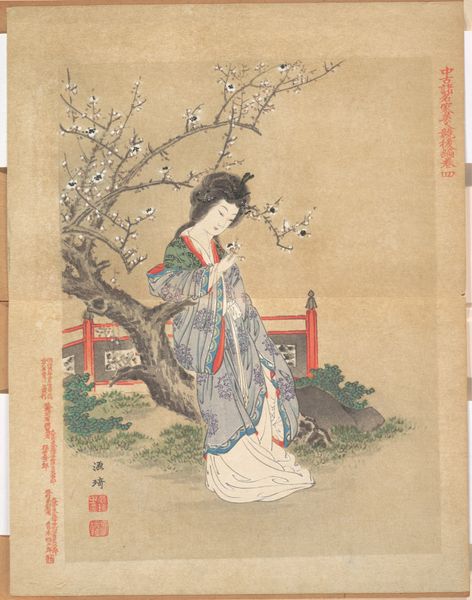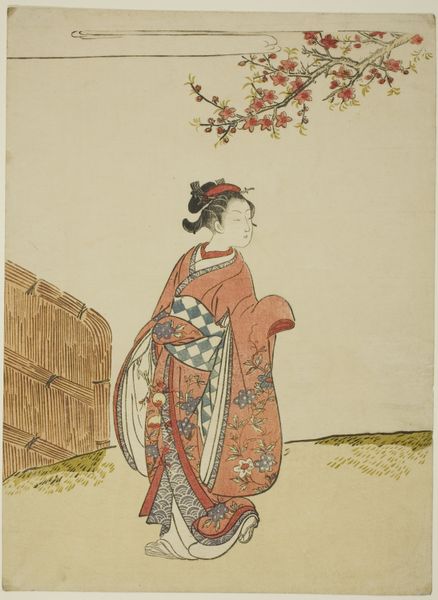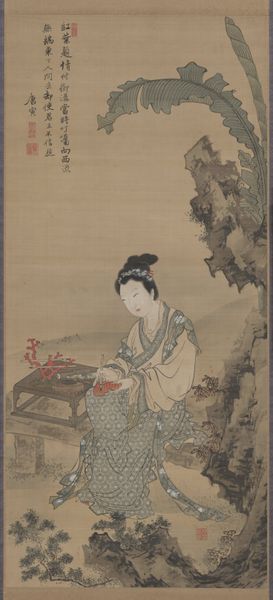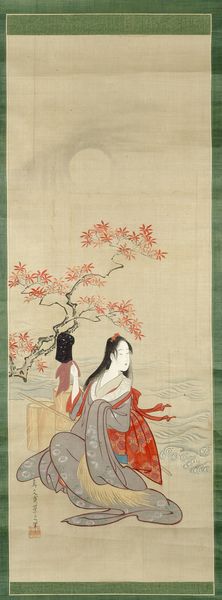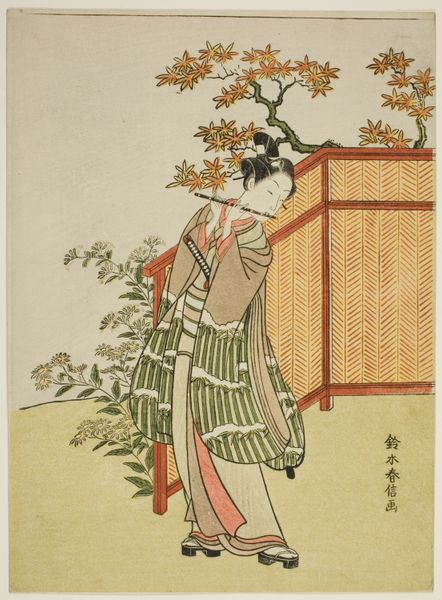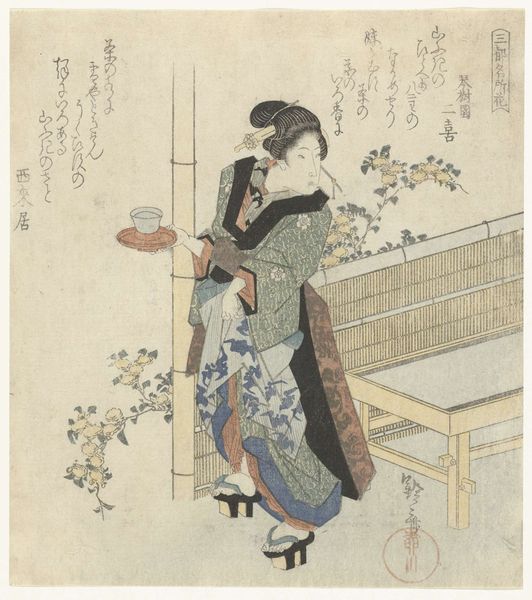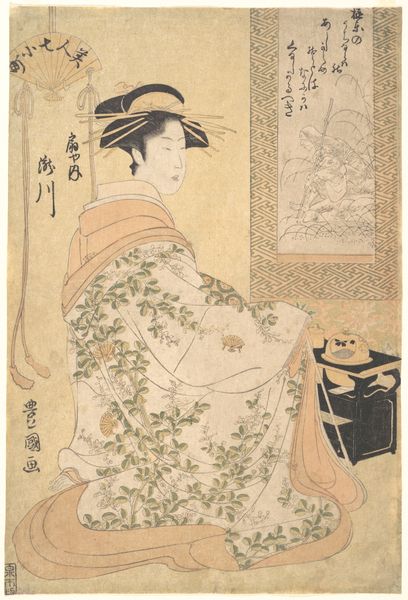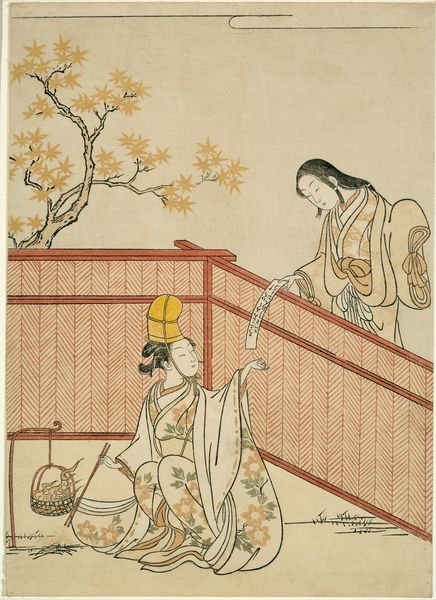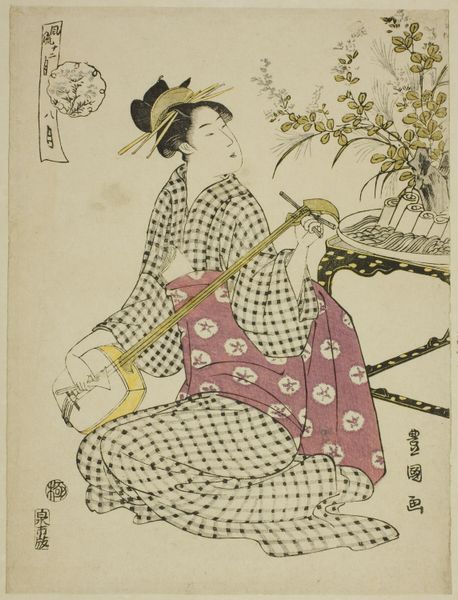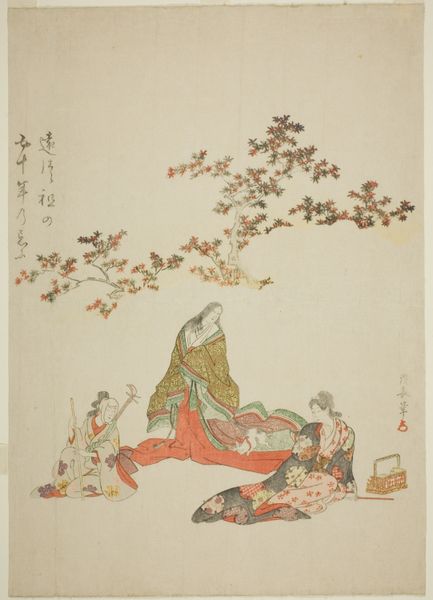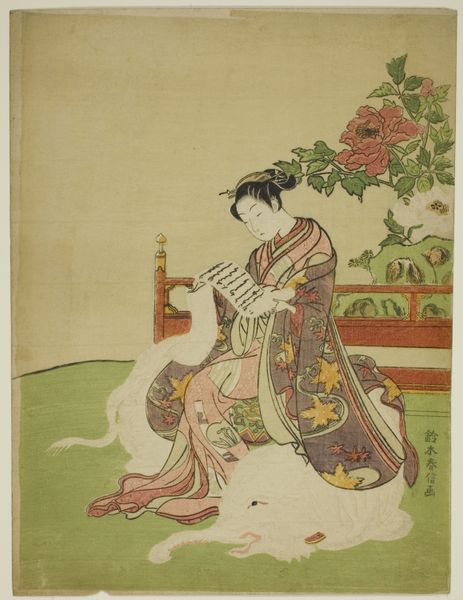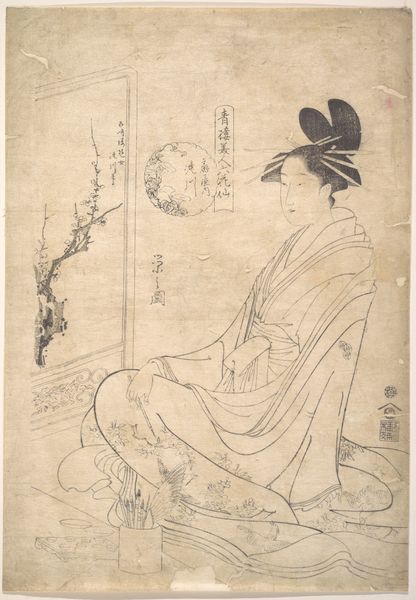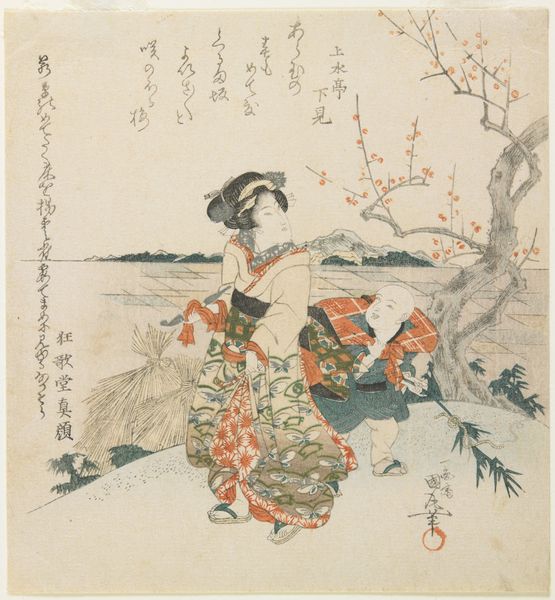
Parody of a Beautiful Woman as Rin Nasei (Ch. Lin Hejing) with Crane c. mid 18th century
0:00
0:00
watercolor
#
portrait
#
water colours
#
ink painting
#
asian-art
#
landscape
#
ukiyo-e
#
watercolor
Dimensions: 35 × 10 3/4 in. (88.9 × 27.31 cm) (image)
Copyright: Public Domain
Kawamata Tsunemasa painted this scroll sometime between 1720 and 1740, using ink and color on paper. The subtle gradations of ink wash, the precise calligraphic lines defining the woman’s features and robes, and the delicate rendering of the crane’s feathers all point to a high degree of technical skill. This wasn’t just about spontaneous self-expression, but the mastery of established techniques refined through years of practice. Consider the preparation of materials alone. The grinding of the ink stick, the sizing of the paper, the careful control of the brush – all these steps demand focused labor. The artist also makes use of negative space to define the forms. The whiteness of the crane and plum blossoms contrasts with the muted background, enhancing the visual impact. So while this painting may appear effortless, it’s actually the product of considerable labor, intensive training, and a deep engagement with the materials and techniques of its time. It challenges our assumptions about the relationship between art, craft, and the values we assign to each.
Comments
minneapolisinstituteofart almost 2 years ago
⋮
In this parody of the ancient Chinese poet Lin Hejing (also known as Lin Bu; 967–1028), a fashionable courtesan poses with a crane beneath the delicate blossoms of a plum tree in the cold of early spring. Lin Hejing is said to have lived alone on an island—Gushan, or “Solitary Hill”—in the middle of Hangzhou’s fabled West Lake. The poet’s only companions were pet cranes and his beloved plum trees.
Join the conversation
Join millions of artists and users on Artera today and experience the ultimate creative platform.
